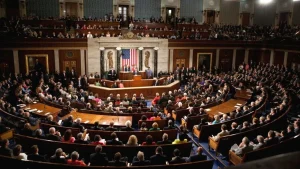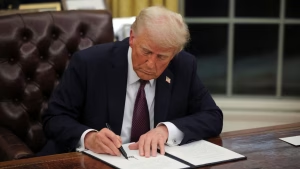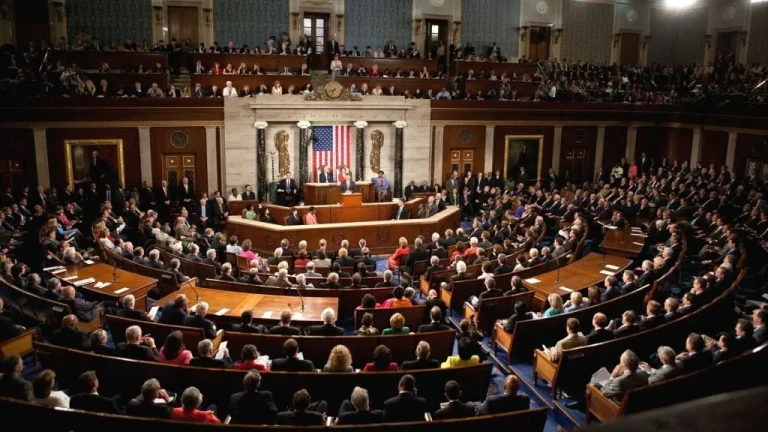Note: X post at the end of the article.
In a recent announcement that has captured national attention, former President Donald Trump declared that tariffs on imported steel will be increased from 25% to 50% starting next week. This aggressive policy shift aims to further shield the U.S. steel industry from foreign competition and what the administration describes as unfair trade practices. The move is being framed under the banner of “America First,” reinforcing Trump’s commitment to prioritizing domestic manufacturing and protecting American workers.
Background: Trump’s Steel Tariffs Policy
To understand the significance of this latest announcement, it is important to revisit the origins of the steel tariffs under the Trump administration. In March 2018, President Trump imposed a 25% tariff on imported steel and a 10% tariff on aluminum. The goal was to protect U.S. steel producers from a flood of cheap imports, which were perceived to undermine the domestic industry and threaten national security. At the time, Trump emphasized that a strong steel industry was vital for economic strength and military readiness.
These tariffs sparked significant debate both domestically and internationally. Supporters argued that the tariffs revitalized U.S. steel mills, preserved thousands of American jobs, and curbed unfair trade practices, particularly from countries like China, which was accused of dumping steel at below-market prices. Critics, however, contended that the tariffs increased costs for American manufacturers who rely on steel as a raw material, raising prices for consumers and risking retaliation from trade partners.
The New 50% Tariff: What It Means
The proposed increase from 25% to 50% represents a substantial escalation in trade policy. Doubling the tariff rate would significantly raise the cost of imported steel, making foreign steel much more expensive and thereby giving a stronger advantage to American producers.
This move could have several intended effects:
-
Boost Domestic Production: By making imported steel pricier, U.S. steel mills could see increased demand for their products, leading to higher production levels, more investment, and potential job creation in the sector.
-
Protect Against “Unfair” Competition: The Trump administration has frequently cited concerns over “unfair” trade practices, including dumping and subsidies by foreign governments. Increasing tariffs aims to discourage these practices and level the playing field.
-
National Security Considerations: Steel is a critical material for defense industries. Ensuring a robust domestic steel supply is framed as a matter of national security, reducing reliance on foreign sources.
Potential Economic Impact and Concerns
While the tariff hike aims to bolster the steel industry, economists and industry analysts warn of potential risks and broader economic consequences:
-
Increased Costs for Downstream Industries: Steel is a fundamental input for many American industries, including automotive, construction, and machinery manufacturing. Higher steel prices can increase production costs, which may be passed on to consumers as higher prices on goods.
-
Risk of Trade Retaliation: Major trading partners may retaliate with tariffs on American exports, potentially harming U.S. farmers, manufacturers, and other sectors reliant on exports.
-
Inflationary Pressures: Higher input costs could contribute to inflation, affecting the broader economy and consumers’ purchasing power.
-
Market Distortions: Overly high tariffs might encourage inefficiency within the domestic steel industry by protecting less competitive producers, potentially leading to complacency and less innovation.
Domestic and International Reactions
The announcement has generated mixed reactions:
-
Steel Industry: U.S. steel producers and labor unions have generally welcomed the increased tariffs, seeing them as a strong step toward reviving an industry that has faced significant challenges from global competition.
-
Manufacturing Sector: Some manufacturers dependent on steel have expressed concern that the tariffs could raise their costs and reduce competitiveness.
-
Trade Partners: Countries like the European Union, Canada, and South Korea, which are significant steel exporters to the U.S., have warned that such tariff increases could escalate trade tensions and lead to retaliatory measures.
The Political Angle: “America First”
The tariff increase aligns with the broader political philosophy championed by Trump: putting American workers and industries first. This “America First” approach seeks to address longstanding trade imbalances and perceived inequities that have contributed to the decline of certain U.S. manufacturing sectors.
Trump’s announcement is likely to resonate with his core supporters, who view strong trade enforcement and protection of domestic industries as critical to restoring American economic strength and sovereignty.
Historical Context: Steel and Trade Policy
Steel tariffs are not new in U.S. history. Various administrations have used tariffs as a tool to protect the domestic steel industry during times of economic difficulty or global market disruption.
However, the scale and scope of the proposed 50% tariff would be unprecedented in recent decades, signaling a more aggressive use of trade policy as an economic weapon.
Looking Ahead: What to Expect
If implemented, the 50% tariff on steel imports will reshape the industry landscape. The following developments are likely:
-
Steel prices will rise in the U.S. market, benefiting producers but potentially straining downstream manufacturers.
-
Trade negotiations with partners may intensify, with increased pressure to reach new agreements or resolve disputes.
-
Political debates about the balance between protectionism and free trade will intensify, influencing future policy decisions.
-
Monitoring of economic indicators such as inflation, employment in manufacturing, and trade balances will be crucial to assess the tariffs’ effectiveness.
Conclusion
President Trump’s announcement to raise steel tariffs from 25% to 50% is a bold move that underscores his administration’s commitment to protecting American industry through assertive trade policies. While the policy aims to revitalize the domestic steel sector and address unfair competition, it also raises concerns about broader economic impacts, including increased costs for manufacturers and the risk of trade retaliation.
The coming weeks and months will reveal how this policy shift affects the complex interplay of industry, trade, and the economy — and whether it ultimately strengthens America’s steel industry without unduly harming other sectors.
As the debate over tariffs and trade continues, one thing remains clear: the U.S. steel industry stands at a pivotal crossroads, with the potential for significant change on the horizon.

James Jenkins is a celebrated Pulitzer Prize-winning author whose work has reshaped the way readers think about social justice and human rights in America. Raised in Atlanta, Georgia, James grew up in a community that instilled in him both resilience and a strong sense of responsibility toward others. After studying political science and creative writing at Howard University, he worked as a journalist covering civil rights issues before dedicating himself fully to fiction. His novels are known for their sharp, empathetic portraits of marginalized communities and for weaving personal stories with broader political realities. Jenkins’s breakout novel, Shadows of Freedom, won national acclaim for its unflinching look at systemic inequality, while his more recent works explore themes of identity, resilience, and the fight for dignity in the face of oppression. Beyond his novels, James is an active public speaker, lecturing at universities and participating in nonprofit initiatives that support literacy and community empowerment. He believes that storytelling is a way to preserve history and inspire change. When not writing, James enjoys jazz music, mentoring young writers, and traveling with his family to explore cultures and stories around the world.









